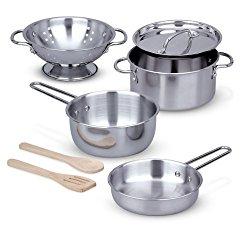Basic 401k investing is easy and can be done with a target date fund or by calculating your growth/income split and investing in a total stock market fund and a total bond market fund. (For details, see Simple Ways to Invest in your 401k.) If you take this road, you can have yourself in good shape when retirement time rolls around while spending maybe 5-10 hours over your whole life setting things up and making adjustments. This is predicated on your putting away 10-15% of your paycheck each month into your 401k. Money doesn’t magically appear without an investment.
But what if you’re willing to spend a little more time learning and twiddling with your account. How can you really maximize your returns? If you take the basic route, you’re probably going to end up making an annualized return somewhere between 8 and 10% over your working lifetime. Optimize things and you may get between 10 and 12%. How much does an extra 2% matter? At 8%, investing $400 per month, you’ll end up with $2.3 M between starting work at age 20 and retirement at age 67. At 10%, you’ll have $4.6 M. If you could get 12% or 15%, you’d have $9.1 M and $26.1 M, respectively, Would you spend an extra couple of hours per year to gain between $2 M and $24 M? I sure would!





Find the Top 100 Books 40-60% off
Now that I’ve got you interested, what are the things to do to maximize your returns? Well, here they are:
1. Don’t overwork things.
Normally, this would be the last item discussed, but it is so important it needs to be said up front. Doing a little bit of adjusting and fine-tuning is good, but constantly moving money around will reduce your returns to the point where you may not even get the 6% to 8% you would get in a target date retirement fund. It is best to accept that you cannot time the markets and that you do not know anything that is not already priced into the markets at any given time. It is best to continue to follow the same strategy regardless of what the markets are doing.
2. Concentrate in stocks.
Adding bonds will reduce the level of volatility in your account, but it will also reduce your returns since bonds do not perform as well as stocks over long periods of time. When you get close to retirement age, or if bond yields climb into the teens because of high-interest rates, taking up a bond position makes sense. Between the ages of 16 and 55, especially with yields at current levels which are near all-time lows, staying in all stocks, or maybe all stocks and REITs, is the way to go.



Pet Supplies for Your Furry Friend
3. Overweight small
Small companies have room to grow because they are small. It is far easier for the pizza place down the street with three locations to double their store count and their earnings than it would be for McDonald’s to do the same. For this reason, small stocks will do a little better over long periods of time than will big stocks. Over any given year or period of three years is anyone’s guess, since sometimes large-caps outperform and other times small-caps outperform.
4. Go international.
The US is a great place to invest due to stability and good property rights, but it is not the only game in town. There will be times when international markets perform better. You should, therefore, include some international stocks in your portfolio.
5. Stick with indexes.
Study after study has shown that all stock funds perform about the same with the only real difference being the fees that are charged and expenses due to trading inside of the fund. You, therefore, get the best returns when you find funds that have low costs and do not trade very often, which means you want unmanaged funds. Index funds fit the bill.



Find the Hottest Toys and Games
Given the rules above: Don’t overwork things, 2) Concentrate in stocks, 3) Overweight small, 4) Go international, and 5) Stick with indexes, an optimized portfolio for someone between the ages of 16 and 55 might look like the following:
Large-cap index fund (e.g., S&P500 index fund) 30%
Small-cap index fund (e.g., Vanguard Small-Cap Index) 40%
International stock fund (e.g., Vanguard Total International Stock Index) 20%
REIT Fund (e.g., Vanguard REIT Fund) 10%
You would set up your contributions to follow the percentages shown above.
Over time it is likely that one or two of the funds would outperform the others for short periods of time. For example, during a stock market slump the REIT might hold its ground or even increase while the stock funds decrease. That might make the portfolio overweighted in the REIT, with the portion in the REIT at 15% instead of the targeted 10%. To correct this, go into the portfolio a couple of times per year and rebalance by shifting money from those funds that are overweighted into those that are underweighted. Often mutual fund companies have tools to allow you to adjust your investments to match your contribution percentages in just one click, so all you need to do is find the right button on their website.
When you are rebalancing, what you are doing is selling funds that have done well (selling high) and buying those that have not done as well (buying low). This is exactly the opposite of what you are doing when you look through the choice of funds in your 401k plan and pick those that have done the best over the last year or five years or buy the funds that have the most stars at Morningstar, but this is what most people do. This is why it is important not to try to time the market or chase the hot funds.
Note that you do not want to rebalance too often since rallies tend to lift stocks well beyond justifiable levels and declines tend to lower price below reasonable levels. This is called momentum, where investors buy stocks because they are going up and sell them because they are going down. Rebalancing once or twice a year is about right. Good dates to pick are just after the new year (since stocks tend to rally at the end of the year as year-end bonuses get invested) and in the late spring since markets tend to do nothing in the summer months while people are on vacation. Late fall is another possibility since big declines tend to happen in September or October.
You might also rebalance after the market has had a big run-up and started to lose steam, or after a big drop once prices have started to stabilize. You’ll never get things perfect, so don’t expect to sell at a top or buy at a bottom.
New to investing? Want to learn how to use investing to supercharge your road to financial freedom? Get the book: SmallIvy Book of Investing: Book1: Investing to Grow Wealthy
Have a question? Please leave it in a comment. Follow me on Twitter to get news about new articles and find out what I’m investing in. @SmallIvy_SI
Disclaimer: This blog is not meant to give financial planning or tax advice. It gives general information on investment strategy, picking stocks, and generally managing money to build wealth. It is not a solicitation to buy or sell stocks or any security. Financial planning advice should be sought from a certified financial planner, which the author is not. Tax advice should be sought from a CPA. All investments involve risk and the reader as urged to consider risks carefully and seek the advice of experts if needed before investing.
